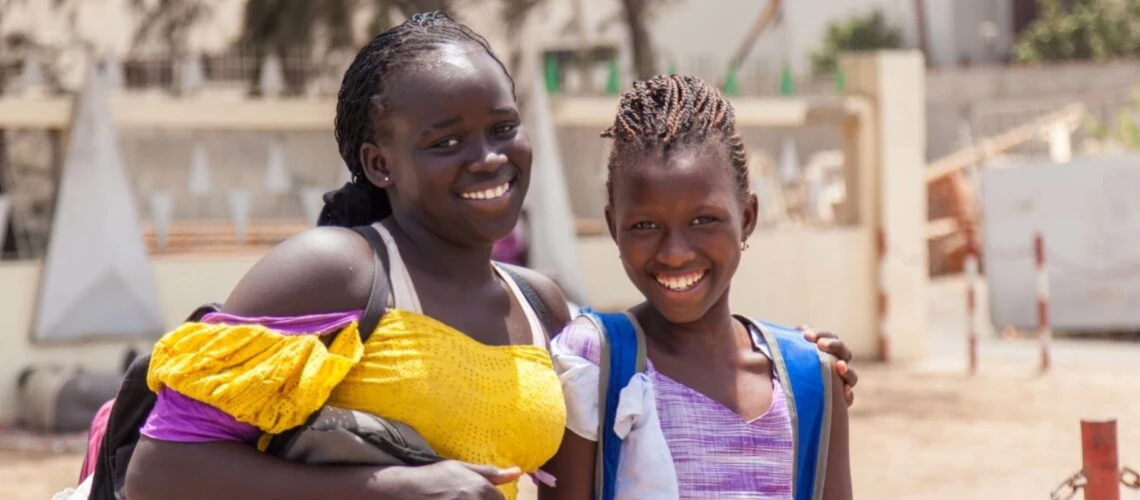 Vaccination against HPV can prevent most cervical cancer cases and, when paired with screening and treatment, it can accelerate progress towards elimination. Copyright: Sarah Farhat/World Bank
Vaccination against HPV can prevent most cervical cancer cases and, when paired with screening and treatment, it can accelerate progress towards elimination. Copyright: Sarah Farhat/World Bank
Cervical cancer – often resulting from an infection by the human papillomavirus (HPV) – is a preventable disease. Yet, it continues to claim the lives of hundreds of thousands of women each year, globally.
Africa bears most of the burden. In 2020, the top 10 countries with the highest rate of cervical cancer and deaths were in Africa. Each year, more than 70,000 women die from cervical cancer in the region, impacting their health and well-being, robbing families of their loved ones and exacting a heavy toll on communities and economies.
Beyond the physical and psychological impact and social stigma, the financial burden of cervical cancer can further entrench communities in poverty and vulnerability. A study in Ethiopia showed that 46% of women lost income, 71% faced financial distress due to medical and non-medical expenses and 67%, faced employment challenges. Cervical cancer also burdens health systems, as expensive treatments often divert resources that could otherwise be invested in preventive measures.
It does not have to be this way. We have the tools and knowledge to end this disease. Vaccination against HPV can prevent most cervical cancer cases and, when paired with screening and treatment, it can accelerate progress towards elimination. Let us look at what it will take to accelerate country and global efforts to end this disease.
Political commitment is key to setting a clear path to HPV vaccination
Last month, at the Global Cervical Cancer Elimination Forum in Cartagena, governments, donors, multilateral institutions, and global health partners, including the World Bank and the Global Financing Facility for Women, Children and Adolescents (GFF), announced a wave of new financial and policy commitments for cervical cancer. This builds on the WHO’s Global Strategy for Cervical Cancer Elimination that has set a target to vaccinate 90% of girls by the age of 15, screen 70% of women, and treat 90% of women with cervical cancer.
Last year, at the Africa Human Capital Heads of State Summit, 43 African leaders signed a declaration committing to vaccinating 40% of girls aged 15 by 2025. Rwanda became the first African country to introduce a national HPV vaccination campaign through school-based programs, which has consistently achieved 98% population coverage, with more than 1.2 million girls and women fully vaccinated.
Strong primary health care systems can expand access to HPV vaccines
Despite efficient HPV vaccines and more African countries becoming eligible for GAVI vaccine support, uptake remains low across the region. Many countries face vaccine hesitancy, misinformation, and logistical challenges such as vaccine storage and distribution. At the same time, socioeconomic inequities and gender and social norms are making screening, vaccination, and treatment services less accessible and affordable for women.
It is crucial to invest in stronger primary care systems that are gender-responsive and integrate services like cervical cancer screening and HPV vaccination into essential health service packages delivered at primary and community health levels. Equally important is to prioritize policies that include the HPV vaccine in routine immunization for adolescent girls, particularly in underserved areas to reach the most vulnerable girls, including those out of school. For example, countries like Tanzania and Mozambique have included HPV vaccination in routine immunization packages.
Working with communities and youth advocates can drive vaccination acceptance
Community engagement and mobilization are crucial in addressing cultural, social, and religious barriers to HPV vaccination acceptance. Youth advocates can help create awareness about early detection and screening and talk to adolescent girls about the importance of vaccination. In countries like Tanzania, Liberia, Nigeria, for instance, CSOs, community and youth leaders are engaging in social mobilization campaigns to raise community awareness around HPV vaccination. In Senegal’s Sedhiou region, CSO advocacy with parents and teachers has contributed to increased vaccination among adolescent girls aged 9-15.
Partnerships can mobilize more resources and knowledge
The World Bank and the GFF are working in close collaboration with countries and partners to support programs for HPV screening, vaccination and treatment and galvanize partner support to help reach more women and adolescent girls including in schools and primary health care facilities. For example, in Mozambique the GFF and World Bank are supporting the government to strengthen primary health care to meet the health needs of women and adolescents, including through school and community-based programs, and tackle both infectious and non-communicable diseases, including cervical cancer. Another area of World Bank focus is generating knowledge and research to assess interventions and demonstrate the benefits of investing in adolescent health and cervical cancer elimination to drive policies.
Experts predict that cervical cancer can be eliminated—a critical step towards human capital development and gender equality. But it will take concerted efforts. Collaboration, investment, and a strong push for HPV vaccination can ensure that every girl and woman can live a life free from the threat of cervical cancer.
To receive weekly articles, sign-up here


Join the Conversation